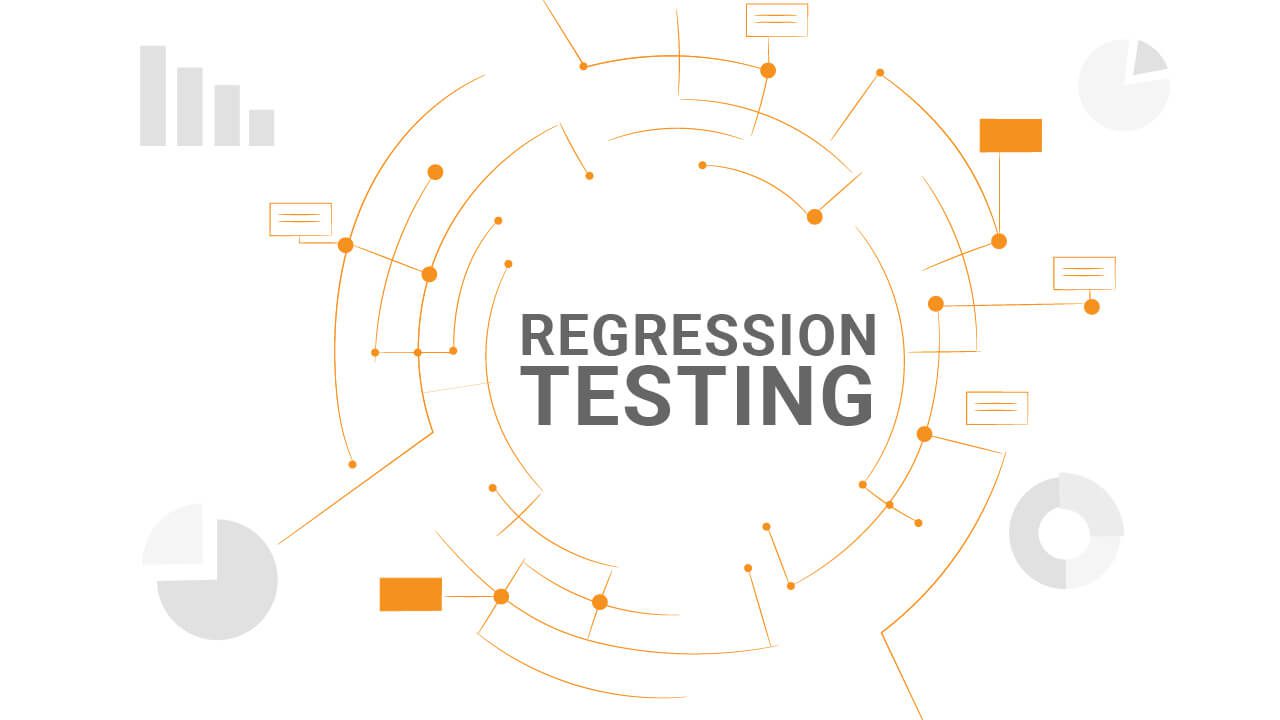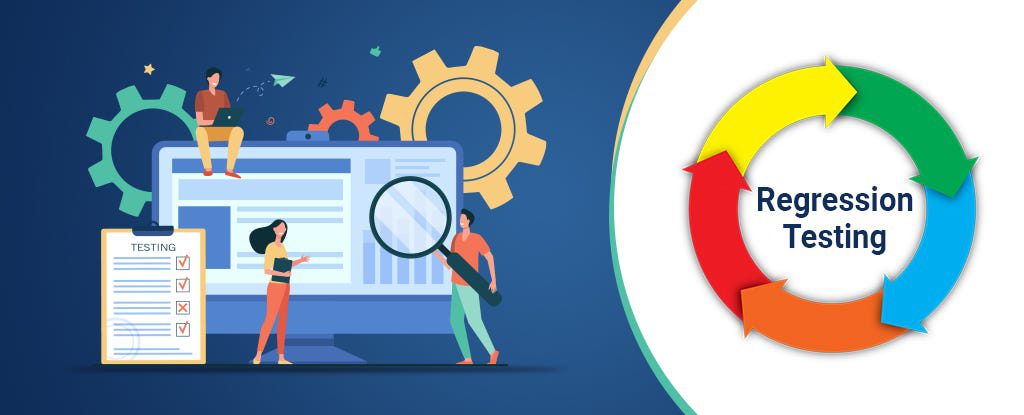At the forefront of every successful software product is a rigorous testing approach to ensure error-free delivery. Testing is one of the most crucial components of any software development process, and regression testing is one of the most basic testing methodologies. Regression testing is performed every time a new feature or functionality is added to the existing web or mobile application, and its significance cannot be emphasized enough.
But one might wonder: what is the purpose of regression testing and how is regression testing performed? Worry not because this blog delineates regression testing, its intricacies as well its importance in the software development life cycle (SDLC). So, let’s dive in!
What is Regression Testing?
In the process of software development, regression testing is regarded as a crucial component, guarding against the unintended consequences of change. This meticulous process involves revisiting previously verified functionalities to ensure they remain intact after modifications to the codebase. By systematically re-evaluating established features, regression testing acts as a safety net, catching potential issues that might otherwise slip through the cracks.
This practice not only preserves functionality but also safeguards user experience, system performance, and compatibility across different environments. In all, regression testing is the unsung hero of software reliability, ensuring that progress doesn’t come at the cost of stability.

Importance of Regression Testing
It is pertinent to state that the importance of regression testing lies in its ability to maintain software integrity amidst constant updates and improvements. As developers introduce new features or fix existing bugs, there’s always a risk of inadvertently affecting other parts of the system. Regression testing mitigates this risk by providing a comprehensive check on the software’s overall health.
Regression vs Non-Regression Testing
Every time a new feature is introduced to a software application, it is important to retest the application again to make sure that everything is working smoothly and as expected. As it ensures customer satisfaction, regression testing is regarded as an integral part of the software development life cycle.
But how is regression testing different from non-regression testing? Both are different types of testing approaches but are equally important in ensuring the bug-free delivery of the software application. Let’s understand the difference between them!
While regression testing means running all the test cases again once a new functionality is introduced, non-regression testing deals with only testing those aspects that have been newly added. Instead of retesting the whole application, non-regression testing gives you an idea of whether or not the recent changes have caused any unexpected errors or bugs that can result in unexpected outcomes. As a result, you can save a lot of valuable time and resources.
How to Perform Regression Testing?
Regression testing is a critical process that requires a well-thought-out strategy to ensure comprehensive coverage and efficient execution. Here’s an expanded approach to conducting thorough regression testing:
Step 1: Initiate Testing Upon Update Reception
As soon as a new update or change is introduced, the QA team should spring into action. Begin by thoroughly analyzing the update’s scope and potential impact on existing functionalities. This initial assessment helps in prioritizing test cases and identifying high-risk areas that require immediate attention. Collaborate with developers to understand the nature of changes and any potential ripple effects throughout the system.
Step 2: Comprehensive Test Case Identification
Organize a collaborative session involving stakeholders, developers, and testers to create an exhaustive list of test cases. This step is crucial for ensuring no critical functionality is overlooked. Consider using mind-mapping techniques or specialized test management tools to visualize and organize test scenarios. Don’t just focus on happy paths; include edge cases and potential failure scenarios to robust test coverage.
Step 3: Define Clear Entry and Exit Criteria
Establish unambiguous entry and exit criteria for each test case. Entry criteria might include prerequisites such as environment setup, data availability, or specific system states. Exit criteria should clearly define what constitutes a pass or fail for each test. This clarity helps enhance the testing process and ensures consistency across team members.
Step 4: Prioritize and Categorize Test Cases
Not all test cases are created equal. Implement a prioritization system based on factors such as critical business functions, frequently used features, and areas prone to defects. Categorize tests into groups like smoke tests, core functionality tests, and full regression suites. This organization allows for more efficient test execution, especially under time constraints.
Step 5: Automate Where Possible
Identify repetitive, time-consuming tests that are ideal candidates for automation. Develop a robust automation framework that can handle frequent code changes. While not all tests can (or should) be automated, a well-balanced mix of automated and manual testing can significantly improve efficiency and coverage.
Step 6: Conduct Exploratory Testing
Complement your structured test cases with exploratory testing sessions and encourage testers to think creatively and explore the application from a user’s perspective. This approach can uncover unexpected issues that might not be caught by predefined test cases.
Step 7: Analyze and Report Results
After executing test cases, thoroughly analyze the results. Look for patterns in failures and unexpected behaviors. Prepare detailed reports that not only highlight issues but also provide context and potential impact. Use visual aids like charts or heatmaps to make the reports more accessible to all stakeholders.
Step 8: Iterate and Refine
It is pertinent to state here that regression testing is an ongoing process. After each testing cycle, conduct a retrospective to identify areas for improvement in your testing strategy. Regularly update your test suite to reflect new features, removed functionalities, or changing priorities.
Difference between Software Testing and Quality Assurance
When to Perform Regression Testing?
Regression testing is crucial at various stages of the software development lifecycle to ensure quality, reliability, and user satisfaction. While continuous testing is ideal, there are specific scenarios where thorough, comprehensive testing becomes particularly critical:
- Major Software Updates: When implementing significant new features or overhauling existing functionalities.
- Before Product Launches: To ensure a polished, bug-free experience for initial users.
- After Critical Bug Fixes: To verify that the fix doesn’t introduce new issues or regressions.
- Platform or Environment Changes: When migrating to new servers, databases, or operating systems.
- Integration of Third-party Components: To ensure compatibility with external systems.
- Compliance Requirements: When adhering to new regulatory standards or industry certifications.
- Performance Optimization: After implementing changes aimed at improving system efficiency or speed.

Advantages of Regression Testing
There are a multitude of benefits of performing regression testing before deploying the website or application. Here are some of them:
- Prevents Unexpected Breakages
- Enhances Software Stability
- Boosts User Confidence
- Facilitates Faster Releases
- Reduces Support Cost
- Protects Investment
Final Thoughts
Software testing is an integral part of the software development life cycle – the final product should be optimized, bug-free, and must perform as per the customer requirements. Regression testing involves rerunning the test cases every time a new feature is introduced to the software application. This type of testing ensures that the website or mobile application works as expected even after a new functionality or component is added.




